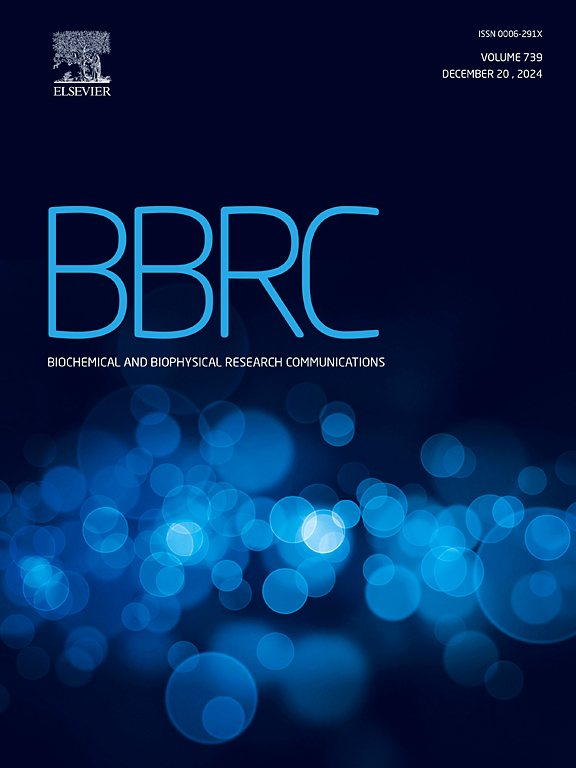Collagen XII deficiency promotes ligament-specific heterotopic ossification via fibrochondrocyte differentiation
IF 2.5
3区 生物学
Q3 BIOCHEMISTRY & MOLECULAR BIOLOGY
Biochemical and biophysical research communications
Pub Date : 2025-03-11
DOI:10.1016/j.bbrc.2025.151621
引用次数: 0
Abstract
Heterotopic ossification of tendons and ligaments causes pain and dysfunction, significantly reducing quality of life. However, its underlying mechanisms remain elusive. In addition to injury, tissue organization and stiffness have been implicated in heterotopic ossification. Collagen XII, a member of the fibril-associated collagens with interrupted triple helices (FACIT) family, plays a crucial role in maintaining the structural integrity and function of tendons and ligaments. Its deficiency alters tissue stiffness and predisposes ligaments to rupture. In this study, we investigated whether collagen XII contributes to the development of heterotopic ossification. Three-dimensional microcomputed tomography (3D-μCT) and X-ray analyses revealed heterotopic bone formation in the knee and ankle ligaments, but not in tendons, of Col12a1-deficient mice, with a 100 % incidence in mice older than 19 weeks. Histological analysis showed the presence of Alcian blue- and Toluidine blue-positive fibrochondrocyte-like cells in Col12a1-deficient ligaments, which were subsequently replaced by bone tissue, as indicated by Alizarin red staining. Real-time qPCR analysis of knee ligaments demonstrated a slight increase in chondrogenic markers and a significant upregulation of osteogenic markers in Col12a1-deficient mice compared with wild-type controls. In vitro chondrogenesis and osteogenesis assays using primary tenocytes from wild-type and Col12a1-deficient mice revealed that collagen XII deficiency enhanced osteogenic potential, whereas chondrogenic potential remained comparable. Our findings indicate that collagen XII deficiency specifically induces heterotopic bone formation in knee and ankle ligaments, occurring via fibrochondrocytes rather than through endochondral or intramembranous ossification.
求助全文
约1分钟内获得全文
求助全文
来源期刊
CiteScore
6.10
自引率
0.00%
发文量
1400
审稿时长
14 days
期刊介绍:
Biochemical and Biophysical Research Communications is the premier international journal devoted to the very rapid dissemination of timely and significant experimental results in diverse fields of biological research. The development of the "Breakthroughs and Views" section brings the minireview format to the journal, and issues often contain collections of special interest manuscripts. BBRC is published weekly (52 issues/year).Research Areas now include: Biochemistry; biophysics; cell biology; developmental biology; immunology
; molecular biology; neurobiology; plant biology and proteomics

 求助内容:
求助内容: 应助结果提醒方式:
应助结果提醒方式:


